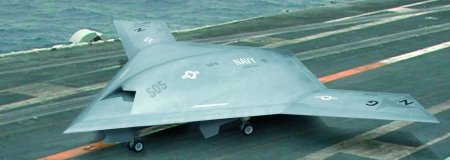Collaborative development of unmanned combat air vehicle operating system is opened up to new suppliers
Software suppliers have been briefed on opportunities to offer applications for the unique common operating system (COS) being developed for the US Air Force/Navy Joint Unmanned Combat Air Systems (J-UCAS) programme. The COS will perform mission management and enable autonomous collaborative operations with multiple dissimilar air vehicles.

The COS is being developed by a consortium of J-UCAS prime contractors Boeing and Northrop Grumman, with Johns Hopkins University’s Applied Physics Laboratory (APL) as integrator/broker. The aim is to build the system once, then re-use it on follow-on programmes, says J-UCAS deputy director Marc Pitarys.
The consortium will develop the COS for release by the integrator/broker to the government, which will then furnish the software to the primes for use in J-UCAS demonstrators. This is intended to ensure the COS uses non-propriety, industry-standard software that the government can control.
The COS will overlay platform-specific vehicle management and control element software for the demonstrators – Boeing’s X-45C and Northrop’s X-47B – and three increasingly capable builds are planned for the J-UCAS operational assessment to begin in 2007. First to be released, last month, was so-called middleware developed by Boeing to provide core services such as publish/subscribe, data management and communication connections.
Boeing and Northrop are working together to complete Build 0 for release in December. This will provide basic services and allow the primes to demonstrate COS integration with their systems. APL, meanwhile, plans to release a series of requests for proposals to software suppliers seeking “best of breed” applications, primarily in the human-system interface (HSI), to be incorporated in later builds.
In June 2007, Build 1 will add line-of-sight and beyond line-of-sight communication interfaces; pre-mission primary and back-up route planning; HSI for single-ship demonstrations; electronic support-measures (ESM) and synthetic-aperture radar (SAR) sensor management; fusion of ESM track data with the electronic order of battle; and weapon management.
The final release for the multi-ship phase of the operational assessment – Build 2 – scheduled for December 2008, will provide secure intelligence interfaces; in-flight mission planning including auto-router; HSI enabling control of up to four air vehicles; and both multi-ship ESM and automatic target cueing using SAR images. Build 2 will also perform battle management, including a common operating picture for J-UCAS operators and mission commanders; attack management, with task generation and allocation, and sensor/weapon pairing; information management, with fusion of onboard and offboard data; and management of network quality-of-service and system and mission contingencies.
GRAHAM WARWICK / WASHINGTON DC
Source: Flight International























